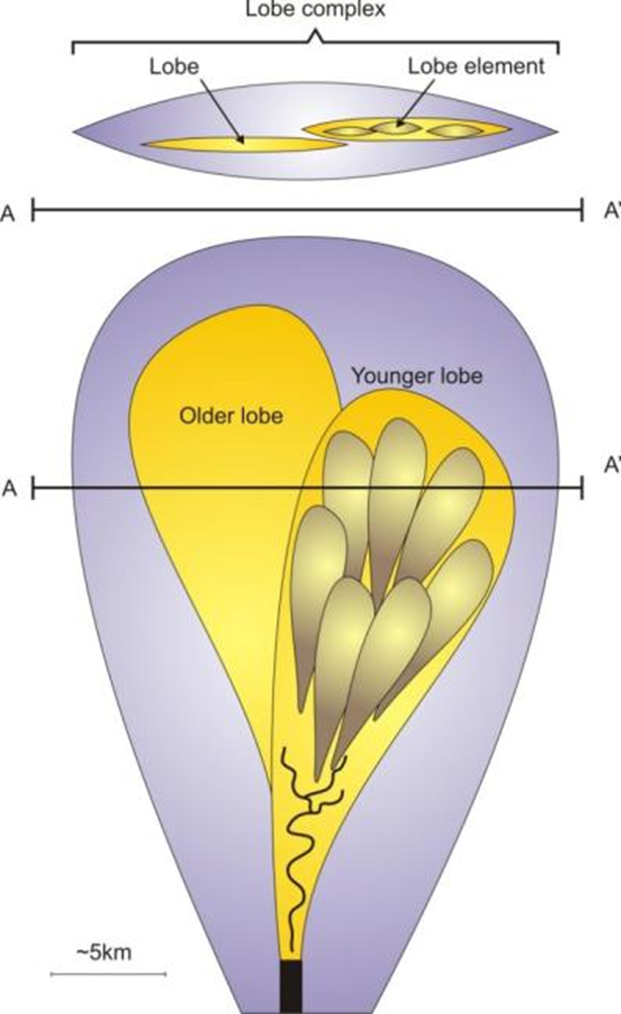8 - Deep-water Sedimentary Systems: process to product
1/10
There's no tags or description
Looks like no tags are added yet.
Name | Mastery | Learn | Test | Matching | Spaced |
|---|
No study sessions yet.
11 Terms
Define a deep-marine depositional system
Predominantly clastic sedimentary systems which lie at depths greater than that of the continental-shelf to slope break, or, beneath the influence of wave and storm action.
Largely inaccessible, and built by processes that are predominantly active during sea-level lowstands.
Still active during the present highstand, albeit with a reduced magnitude and frequency of event occurrence; bu tthe destructive nature of flows within them renders them difficult, or impossible, to monitor.
What is the impact of source to sink context on deep water sedimentary systems?
From high relief to lower relief
Active vs passive margin
passive margins take lots of time to reach the sea with fine sediment, form large fans
active margins have high relief and a short time for sediment to reach the coast, small, radial, coarse submarine fans
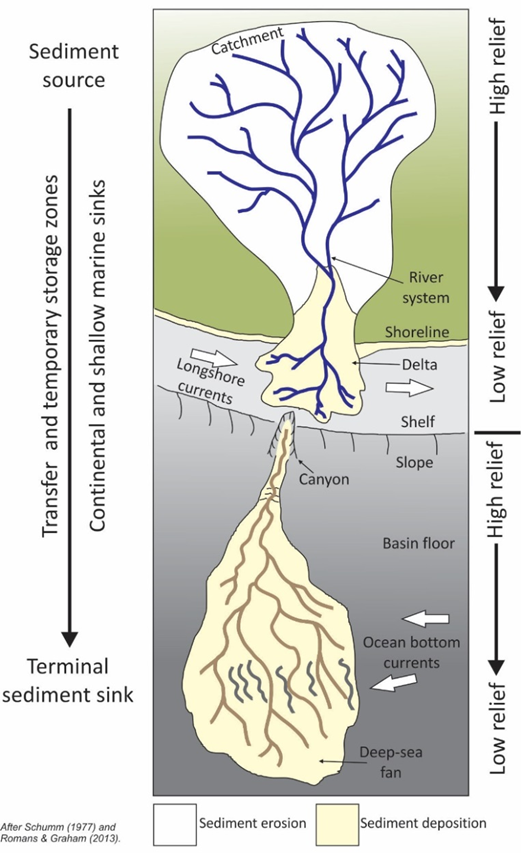
How do highstand vs lowstand climate impact shelf morphology?
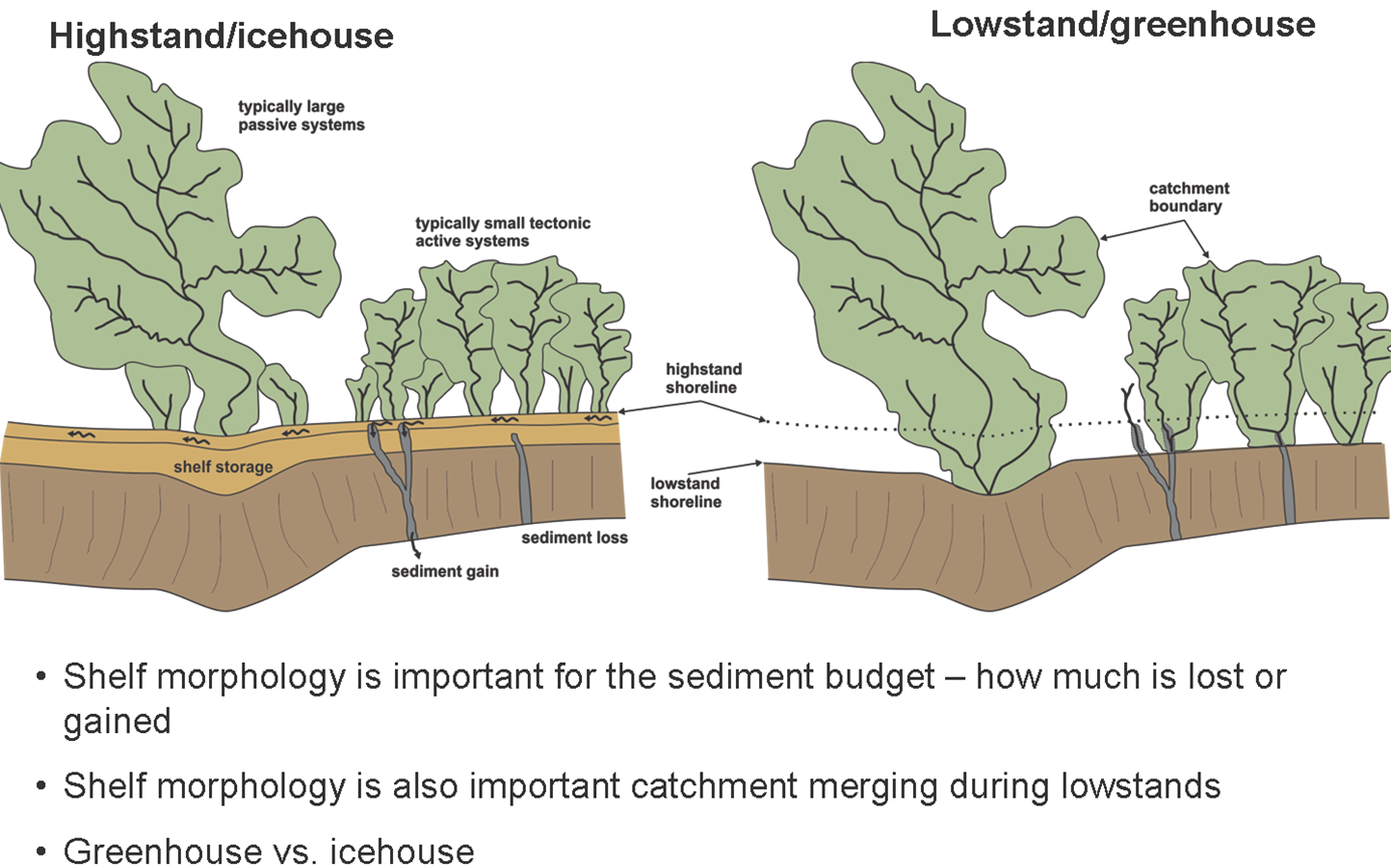
What is the scale of observations in deep-water sedimentary systems?
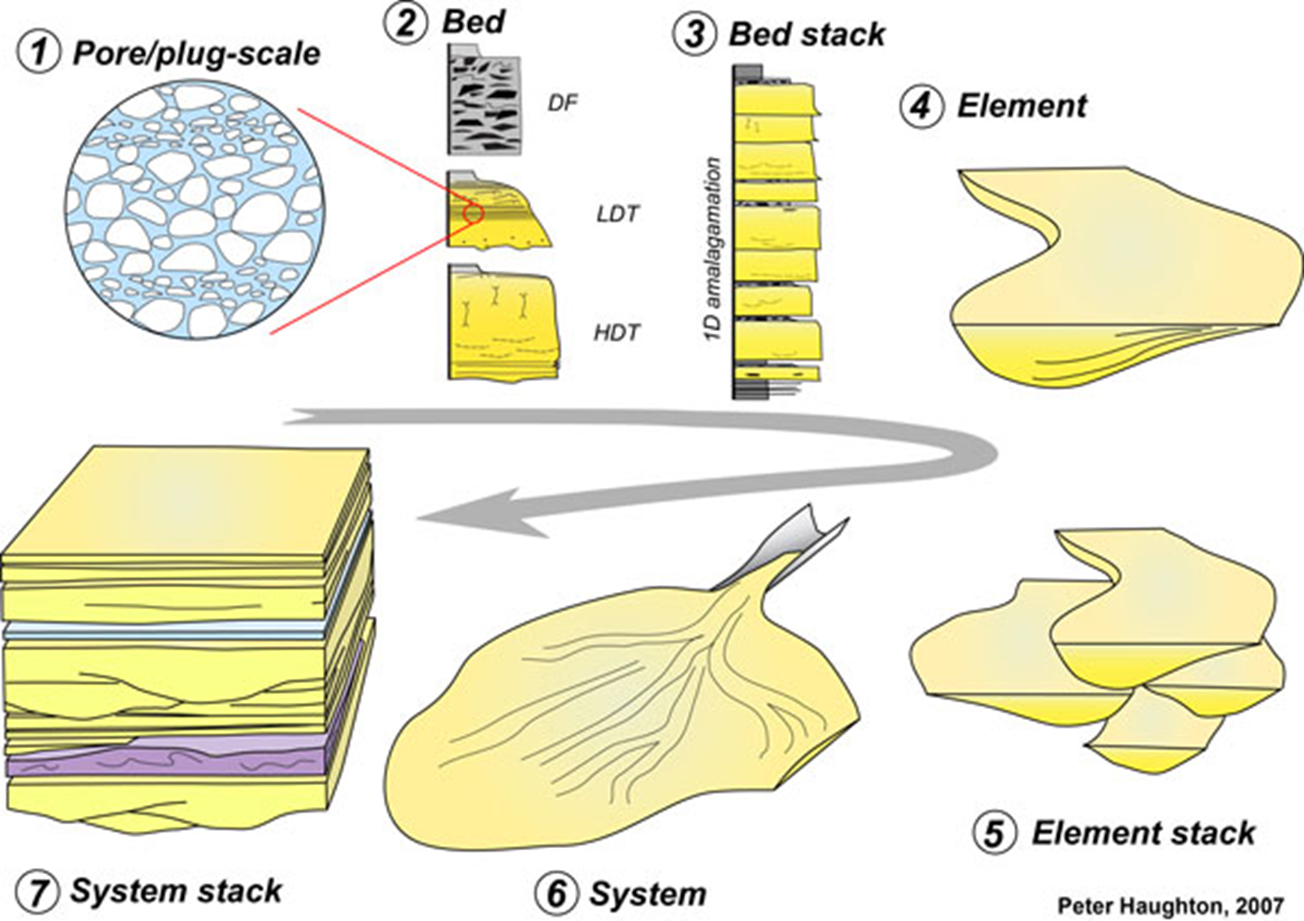
What are the affects of slope topography in deep-water sedimentary systems?
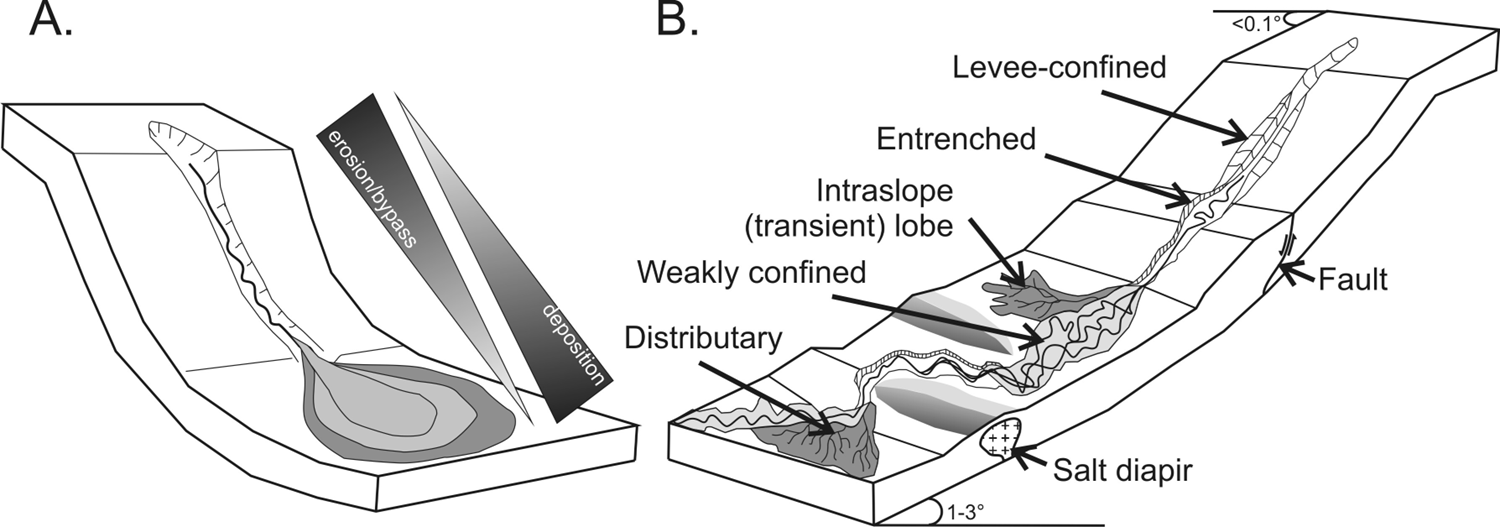
What are the features of channelised (open) slopes in deep-water sedimentary systems?
Conduits for sediment transfer to ocean floor: bypass
More active at low sea level stands when shelf exposed

What are the features of submarine canyons in deep-water sedimentary systems?
Erosional valleys cut into continental shelf
Long term bypass conduits
Most terrestrial sediment is delivered though canyons to the deep sea floor
Steep, v-shaped profile
Dominated by gravity currents: slides, slumps, debris flows and turbidity currents
Often transiently filled with coarse grained bypass lag deposits, and finally finally with mud.
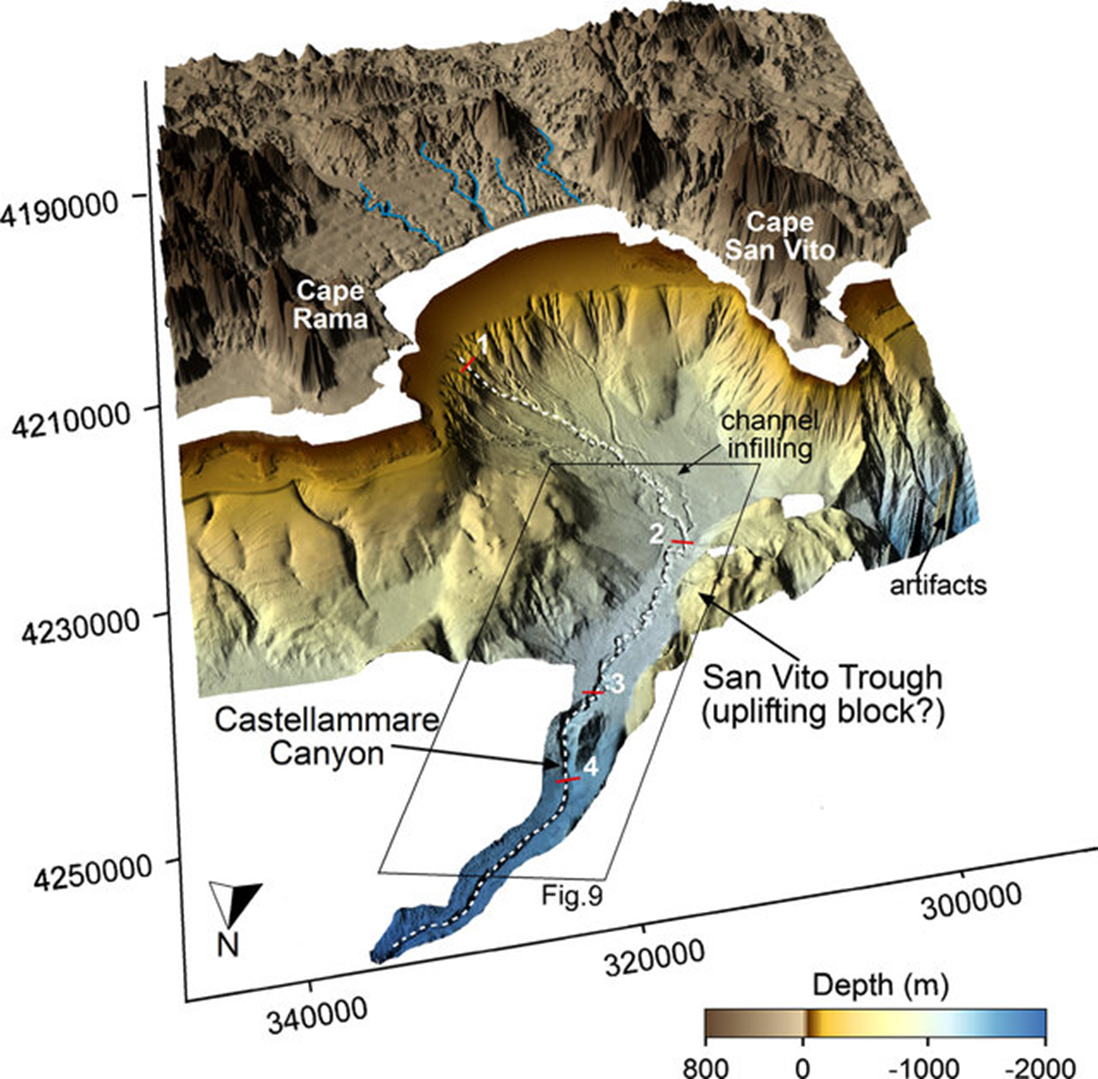
What are the features of submarine channels in deep-water sedimentary systems?
Long-term conduits for the transfer of sediment to basin floor fans
Can be aggradational (levee-confined) or erosional (erosionally-confined), and often a mix of the two
Formed by turbidity currents
Reduced density contrast means that levees can be very large compared to fluvial channels

Feed large volumes of sediment from the shelf to the deep ocean floor
Can be >1000km long & continue on gradients <0.1° at several km depth
Major features on Earth’s surface
Commonly highly sinuous and superficially similar to fluvial channels
What are the features of levees in deep-water sedimentary systems?
Levees build from repeated overspill from the channel, by turbidity currents which are passing through.
Can be hundreds m high and km wide
Dominated by turbidity currents, and built from thin-bedded turbidites
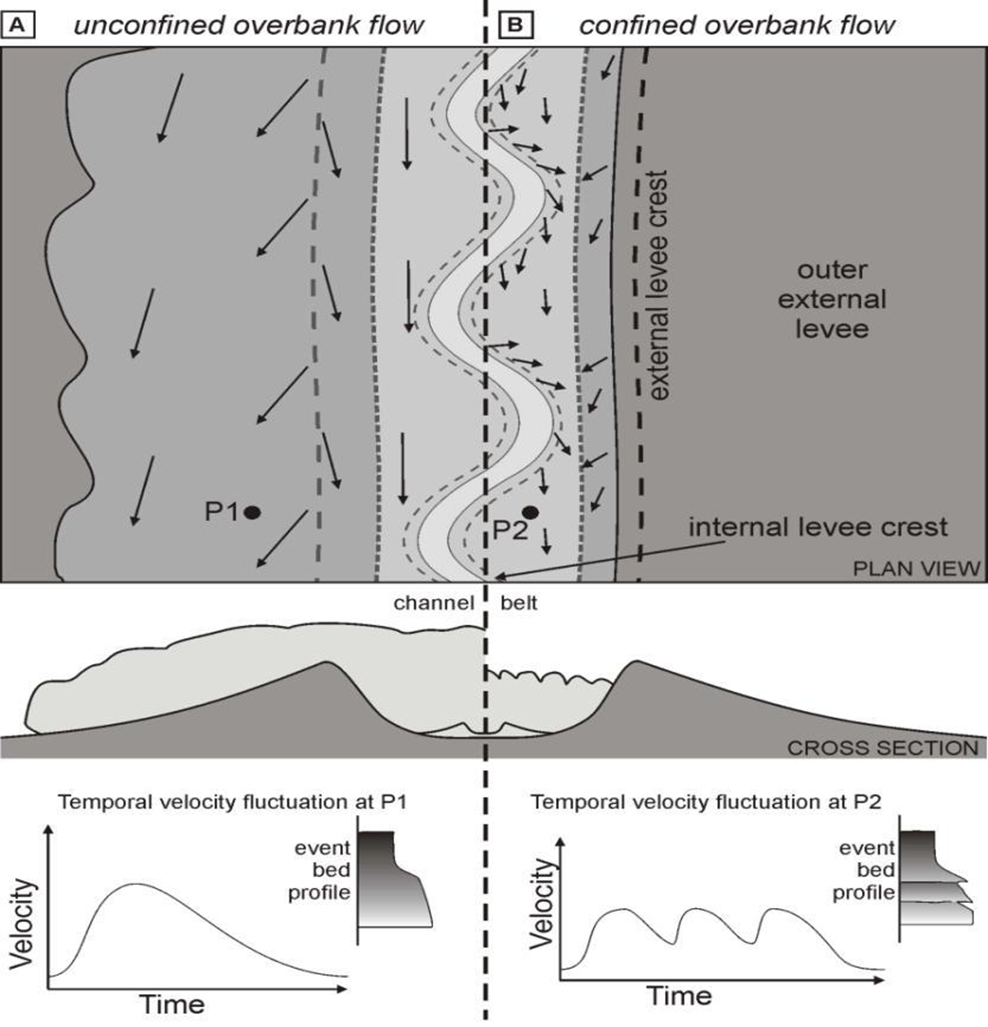
What are the features of external and internal levees in deep-water sedimentary systems?
External
Inner levee deformation
Laterally extensive beds
Predictable N:G and bed thickness
Well organised stacking patterns
Lack of erosional structures
Simple waning flows
Divergent and down slope aligned palaeoflow
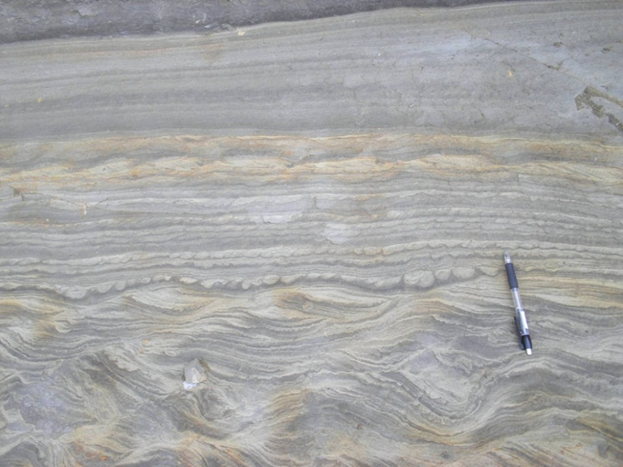
Internal
Minor deformation associated with thalwegs
Some beds pinch out over short distances
Unpredictable N:G and bed thickness?
Less-organised stacking patterns
Erosional structures common
Complex flow waxing and waning signature
Complex palaeoflow history
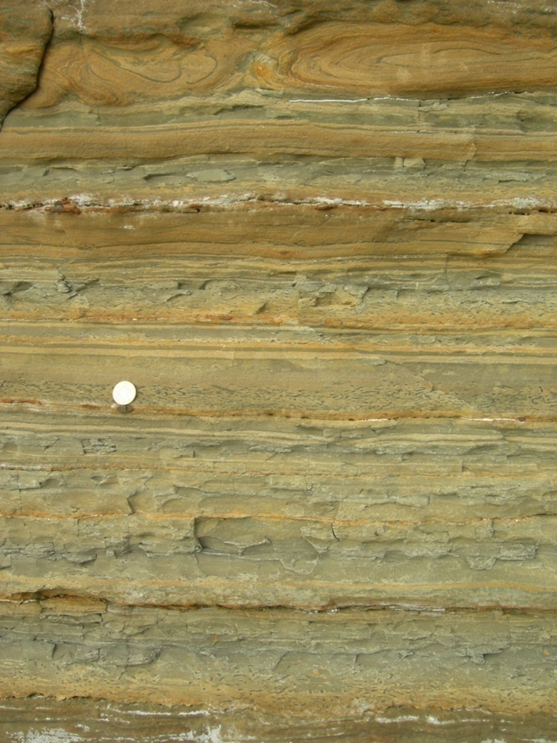
What are the features of lobes in deep-water sedimentary systems?
Distributive
Terminal parts of deep-water sedimentary systems
Downstream fining and thinning of deposits
Dominated by turbidity currents and hybrid flows in their distal parts
In the ancient subsurface, the control on shapes and facies distribution is poor and depositional models have been found to be too simple. Focus has been on submarine channels rather than distributive systems.
